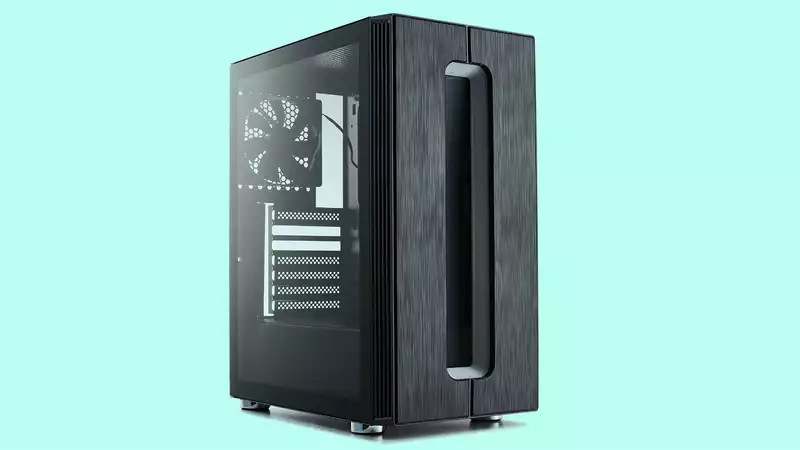Kolink's Nimbus is a relatively flashy case considering its value for money. With RGB LED strips surrounding the front fan vents and tempered glass side panels, it has all the elements of a more expensive case.
However, the internals of this case are very similar to many of the less expensive cases I have tested. Plastic thumbscrews, a one-time-use PCIe slot cover, and generally cheap materials make up the Nimbus, but I won't dwell too long on these minor complaints common to all cases in this price range.
Nimbus features a tried and true solid layout that most PC gamers are familiar with. Another of Nimbus' best features is its many mountable points for cooling. Multiple fans can be mounted on the front, each providing adequate airflow, or a radiator can be installed. There is additional space at the top of the case and room at the rear for a single 120mm fan.
Only one fan is pre-installed at the rear of the case, but this can be moved to any location desired. In its default position, there is insufficient airflow from the front of the graphics card and CPU, so we recommend that you install a second fan in the front of this case as soon as you purchase it. You will have to spend a little more in that case, but a decent fan will not cost more than £5.
I am speaking in British pounds, as these Kolink cases are not widely available in the US. You may be able to find someone who imports it for a fee, but as far as I know, it is not worth the additional cost compared to other cases freely available in the US.
If you are in the UK or elsewhere in Europe, where this case is widely available, it is worth noting that this case is not particularly cool out of the box in single fan configuration. It appears that another fan is needed to bring the temperature down.
The main ingredient in an impressive PC case is airflow, and you would be surprised how many case designs do not do this well at all. Ideally, a handful of high-flow intake fans at the front of the case would draw in cool air, place it over the PC's components, and exhaust it. However, inexpensive cases do not always come with the ideal number of fans for this optimal setup, so it is especially important to find one that is smartly designed to work with limited cooling capacity.
To test the thermal characteristics of these six inexpensive cases, we built a PC into each case. We then ran several benchmarks to put the CPU and GPU under daily stress, and the average results are summarized in this graph.
With the NZXT N7 B550 motherboard installed, the Nimbus RGB cables also did not reach the correct headers. Not a major issue, but a bit inconvenient if you were expecting a synchronized light show and ran into the same problem. Of course, your motherboard's RGB header placement may be different.
The Kolink is definitely one of the better quality budget cases I tested this time around. It is built to a high standard and has all the makings of a flexible PC case for a wide range of applications. If you live in a place where this case is sold at a discount, you might want to consider a second fan from the start.
Our group test: cheap PC cases are a great way to cut costs on your next PC build, but many of the brands we're used to seeing in the Top Case Roundup aren't cheap enough for what we're looking for. So we asked our friends at Overclockers UK (opens in new tab) if they could loan us their cheapest cases.


Comments